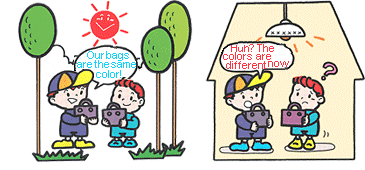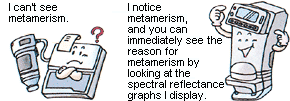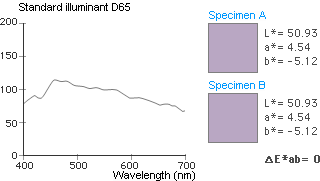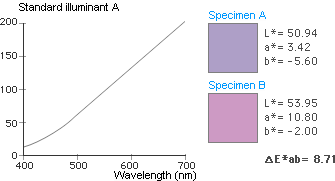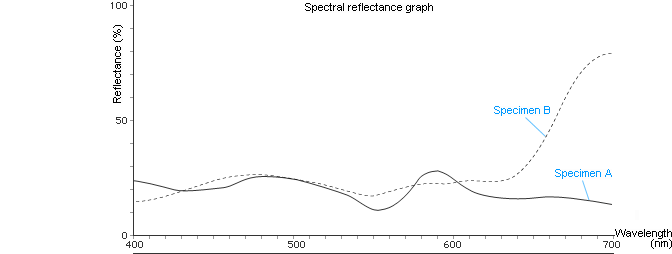Look at Figure 23. If we look at the spectral reflectance curves for the two specimens, we can immediately see that they are different. However, the L*a*b* values for measurements under Standard Illuminant
So how should metamerism be handled? To evaluate metamerism, it is necessary to measure the specimens under two or more illuminants with very different spectral power distributions, such as Standard Illuminant
Tristimulus colorimeters can generally take measurements under only Standard Illuminant C and Standard Illuminant



